Natural sciences support the basic idea of reductionism. Sociology reduces to psychology, which reduces to biology, which reduces to chemistry, which reduces to physics.
Things get enormously more complicated with each layer, so that doesn’t mean that knowing quantum mechanics can give you special insight into the next election. However, the basic idea that biology is just a complicated pattern within chemistry and that chemistry is just a complicated pattern within physics, is pretty well accepted among scientists.
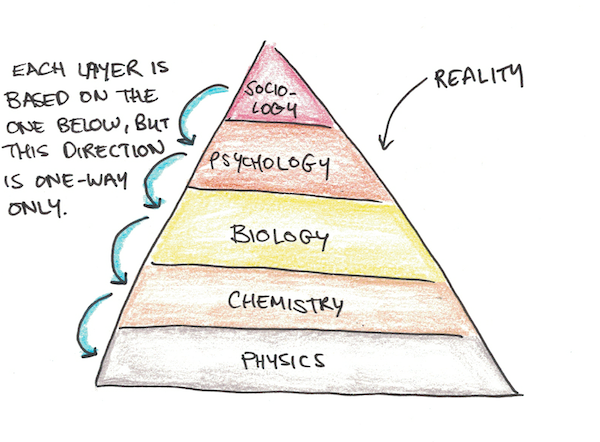
Given this strict hierarchy of reality, it’s comforting to think that our knowledge of reality is also a pyramid. Philosophy (or math) forms the bottom, with physics theories on top, then biological ones and so on.
However, strangely enough, this doesn’t necessarily follow from the fact that reality is hierarchical. Knowledge itself is instantiated on human brains and in social institutions. Since these sit at the top of the hierarchy of reality, that implies that although the things physics describes may not need to reference human minds, our theories themselves may be constrained and informed by phenomena much higher up on the hierarchy.
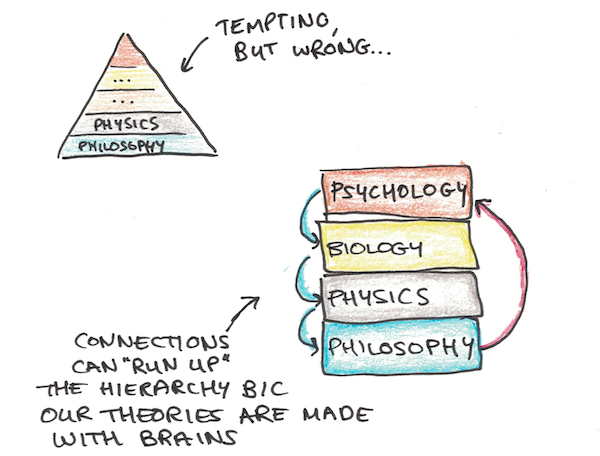
Does Philosophy Say More About Reality or Ourselves?
Psychologists have noticed a lot of quirks of human thinking, that show we’re hardwired to think in certain ways about things that may not always correspond to the actual reality.
For instance, we tend to think of objects and their essences, rather than seeing them as complicated aggregates whose properties arise from simpler parts.
Many “paradoxes” of early philosophy arise because of our all-to-human habit of seeing things as objects with essences rather than complex aggregates. The Ship of Theseus, when taken apart plank by blank, and replaced with new wood, does it stay the same ship? The question is really a non-starter because ships, objects and things (at the level of macroscopic objects) are merely a convenient description, not the fundamental reality.
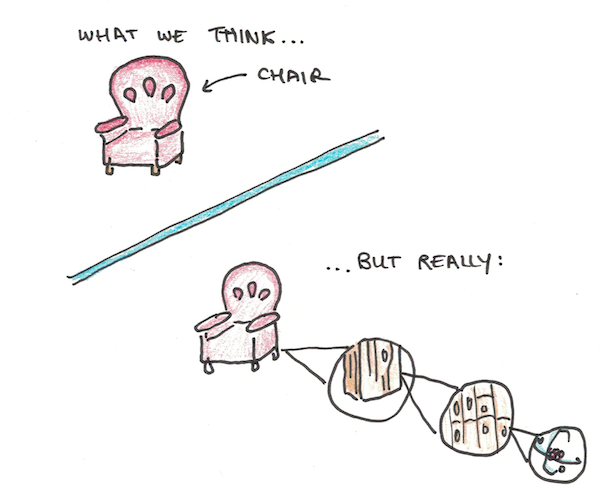
It seems likely that figure-ground separation is another characteristic quirk of human perception. We are hard-wired to see blotches of light as shapes with boundaries. Insides and outsides. This and that. Black and white.
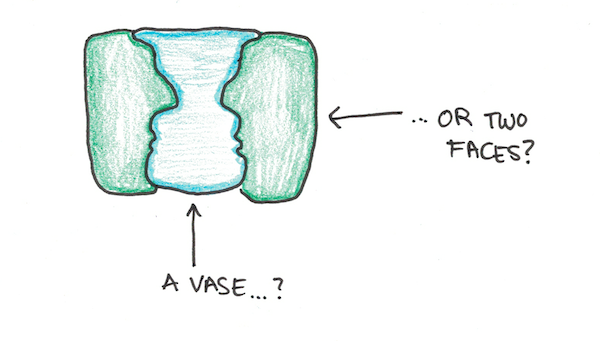
Machine learning algorithms, designed with explicit analogies to our own nervous system, can be shown as mathematical techniques for creating separations in higher dimensional space. Think of each example as forming a point in space, except instead of just having two or three dimensions, it might have thousands (or millions). The algorithm works to divide up the space into the categories it wants to classify. Insides and outsides. Black and white.
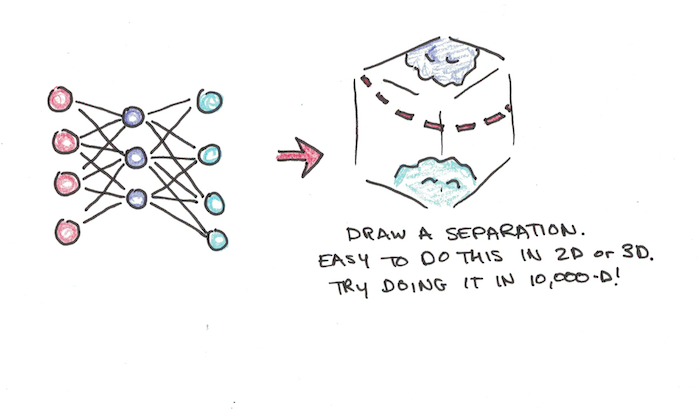
Taking seriously the figure-ground idea of human cognition, therefore, it’s easy to see why we might impose this formulation on the world around us, even when most of the categories we’re actually imposing break down at the edges, rather than form hard lines.
Can You See Things as They Really Are?
The fact that thinking about the world is embedded in processes that are themselves different from the processes you’re thinking about, means that the ideas we have about the world and the world itself are never one-to-one mappings. The former are always simplifications, reorganizations and emphases that exist only on the map, not the territory.
I’ve written before how a lot of us strive to see reality as it is. Would-be rationalists want to see the raw truth, without all the human superstitions and convenient beliefs. Spiritualists want to feel the universe as one, apart from the deceptions of human thinking. Religions, philosophies and thinkers for centuries have tried to grasp at an ultimate reality.
However, it’s likely more often the case that there are merely different ways of conceptualizing the world, rather than the accurate one. Models which leave something out in order to represent something else better.
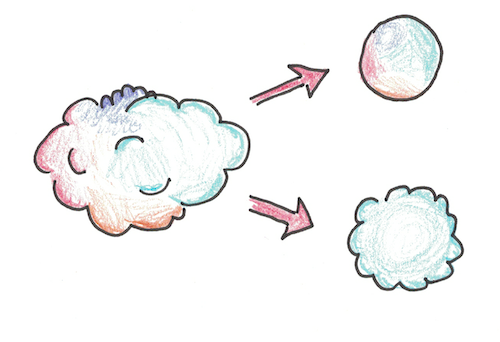
This may sound abstract, but it’s something you do all the time. When looking at objects, we automatically represent them in 3D—chairs and tables have legs that are of equal length. Yet, when you’re drawing, you need to represent them in 2D. This means suppressing your normal instinct to see table legs as equally long, and instead draw them based on the space the occupy in your visual field. Closer is bigger, further is shorter.
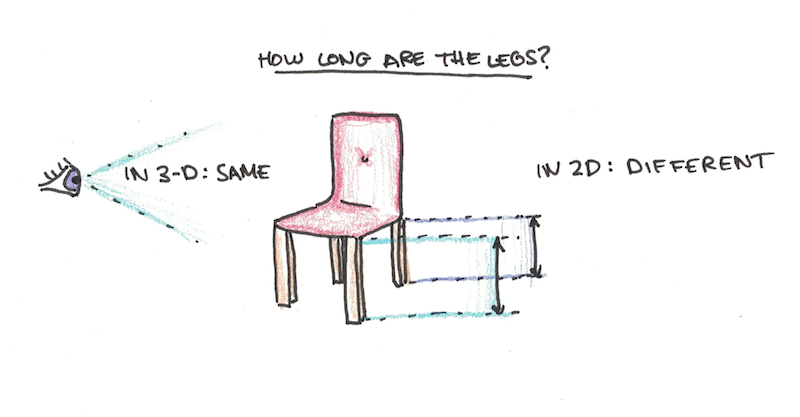
Which perspective is the “true” one? Neither really. Saying it’s a chair with legs is just a convenience. If I smashed it with a wrecking ball, what happened to the chair? It was really just some wood and metal all along. Which were just molecules. Which were just a fantastic number of particles obeying the bizarre rules of quantum mechanics.
Seeing a chair as a 3D object or a 2D one, therefore, can only be judged relative to some context you want to use it. Do you want to sit on the chair (and thus hope the legs are roughly the same size)? Or do you want to draw it, and need foreshortening?
No View is Real, But Some are Realer than Others
The world is, to our best guess, hierarchical. But knowledge isn’t. Knowledge is based on models that are themselves far simpler than the reality they describe. Enormous compressions of information from countless quantum mechanical particles following differential equations, to a few bits of information: chair or not-chair, black or white, inside or outside.
All we have are the models. This doesn’t mean reality is whatever you want it to be. Just that there are lots of different ways you can think about reality. Some will be more useful than others in all cases. Some will be more useful than others, depending on the questions you want to ask.
All learning is really about acquiring more models. Learning when to apply which ones. Integrating pictures so you know to see the table legs as different sizes when drawing, but the same when you want to sit down on them. Knowing when the fuzzy boundaries of one model break down and you need something else to take its place.
In some ways, this model of models I’m describing is not the one we’re born with. Our intuition is that there should be one true way of looking at things, and that the others are wrong. Or, that our models of thinking should collapse into “truer” perspectives the way reality seems to reduce as you go further down the hierarchy.
Our built-in nature is to separate things and make them black-or-white. Since this model of models says that it’s neither true that there’s a “correct” way of looking at things, nor does it say that all ways of looking at things are equally valid. Instead, the model-of-models is a description of itself—there are times when you want to view things in one, “best” way, and other times when you need to choose between different perspectives, depending on the questions you want to ask.
Yet, I think the more comfortable you can get with this unsettling view, the better you can approach learning anything and living in the world. Give up models that don’t work for you. Learn multiple ones that do. Accept that most models are terrible, and aren’t worth learning at all. Yet, recognize that, in many places, it’s only by having multiple models that you can think about it correctly even some of the time.
Also, to remember that this way of looking at things is just another model. What’s going on in your head is actually more complicated.


 I'm a Wall Street Journal bestselling author, podcast host, computer programmer and an avid reader. Since 2006, I've published weekly essays on this website to help people like you learn and think better. My work has been featured in The New York Times, BBC, TEDx, Pocket, Business Insider and more. I don't promise I have all the answers, just a place to start.
I'm a Wall Street Journal bestselling author, podcast host, computer programmer and an avid reader. Since 2006, I've published weekly essays on this website to help people like you learn and think better. My work has been featured in The New York Times, BBC, TEDx, Pocket, Business Insider and more. I don't promise I have all the answers, just a place to start.